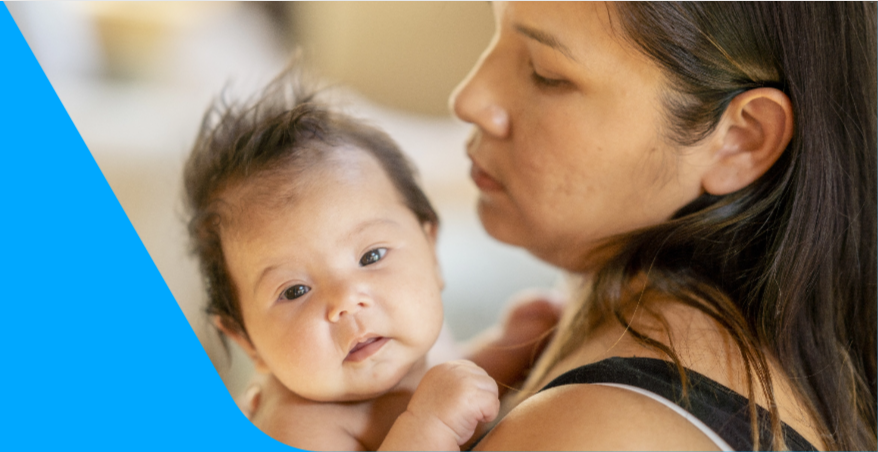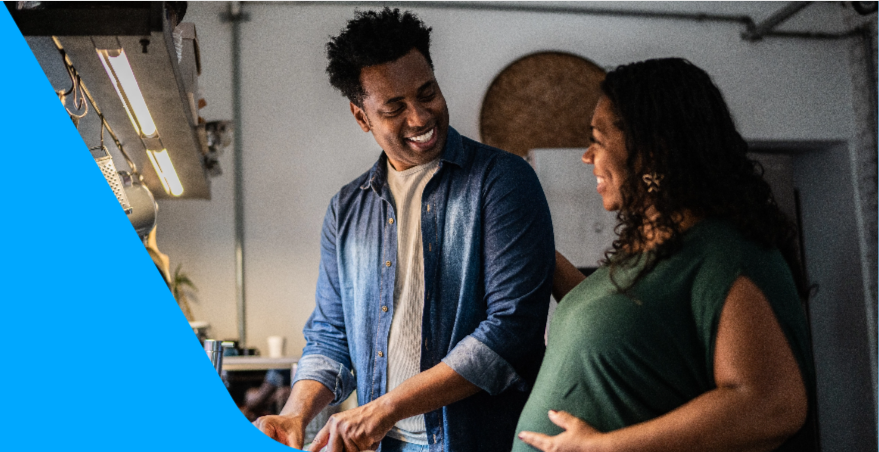SKIP TO CHAPTER

Your baby will reach milestones at his own rate. But if you’d like to nurture his development while creating more opportunities to interact and bond with your baby, here are some activities you can try.
Cognitive
Milestone: Improving vision
What helps: Hang a mobile over the crib or changing table, one that has simple patterns with straight lines and sharp contrasts (for example, black and white); choose toys with the same look.
Why: Your baby is very nearsighted at birth, so he can focus best on objects that are in close proximity. And because simple patterns are easiest to see, he finds them most interesting and will look at them longer. Visual stimulation will help improve his developing eyesight.
Next: Swap out toys often so there’s regularly something fresh to look at. Your baby will enjoy seeing curving patterns and a variety of strong colors, still with contrasts (like yellow and blue, or red with black), by around 3 months.
Milestone: Tracking (following objects with the eyes)
What helps: Hold a rattle at a distance of about 8 to 12 inches from your baby’s face and wait for him to focus on it; then slowly move it from one side to the other, allowing his eyes to track its movement.
Why: This activity helps your baby develop visual coordination and depth perception. When the object crosses the midline of his face, the connection between the left and right hemispheres of his brain is stimulated, a necessary development that allows the brain to process and relay information in a coordinated way.
Next: If you continue to play this game over a period of time, your baby will begin to bat a hand at the object as it passes by, which further aids hand-eye coordination.
Motor
Milestone: Holding his head up independently
What helps: Give your baby play time on his stomach every day.
Why: Your baby will lift his head to look around, which strengthens his neck muscles.
Next: With lots of tummy time and practice, your baby will get to the point where he’s able to raise himself up on his forearms.
Milestone: Grasping
What helps: Place a light rattle in your baby’s clenched fist.
Why: Initially, the grasp reflex will cause your baby to hold tight automatically. By by the time he is 3 or 4 months old, the grasp reflex will disappear. Then his hands will be half-open most of the time and he will practice opening and closing them. Giving him things to hold helps him gradually develop better control.
Next: With practice (after about 3 to 4 months) he’ll be able to shake the rattle himself.
Communication
Milestone: Cooing
What helps: Talk to your baby often, especially (but not exclusively) in “parent-ese,” the higher-pitched, singsongy voice that parents often naturally adopt with babies.
Why: Babies learn about language—from simple vocabulary words to complex grammar—by hearing you talk. Your baby was born preferring high-pitched voices, Mom’s in particular. Being exposed to all kinds of talking, from parent-ese to regular adult speech, helps promote language development.
Next: Read to your baby (even though he may not understand the words or the narrative). As your baby hears your voice in a variety of situations, he’ll learn to use his cooing and simple babbling to express emotion.
Social
Milestone: Smiling
What helps: Respond to your baby’s smiles with smiles of your own.
Why: Your baby’s first intentional social smile will happen on its own at around 6 weeks. An enthusiastic smile returned by you helps your baby begin to get a feel for carrying on a back-and-forth conversation. Happily, too, smiling gives your baby an important way to connect with you other than by crying.
Next: Give your baby a big smile when you notice him watching you, giving him the opportunity to respond to you.






